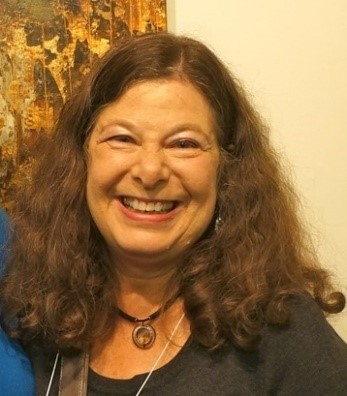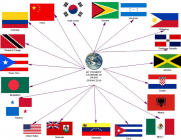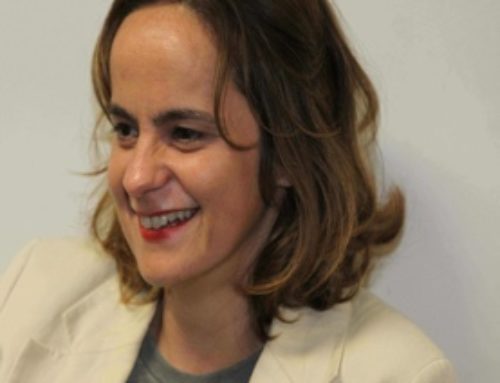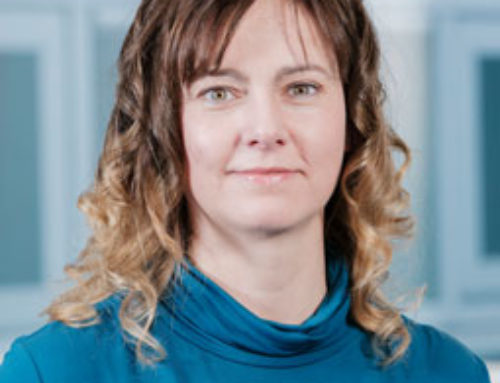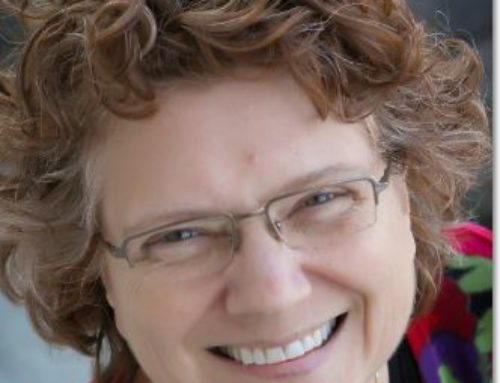HETL Note: In this academic article by Dr. Hope J. Hartman, the author explores the importance of understanding the multidimensional of cultural diversity and inclusion and how this understanding can be used by professors and instructors to more effectively develop varied instructional strategies which will allow them to teach with better cultural responsiveness. The author describes a variety of approaches she has used in highly diverse classrooms with undergraduate and graduate teacher education students.
Author bio:
 Hope J. Hartman is Professor Emerita of the City College of New York and the Graduate Center of the City University of New York. At CCNY she was Director of the Center for Excellence in Teaching and Learning and the City College Tutoring and Cooperative Learning Program. Her Ph.D. in cognitive psychology has been used primarily in educational psychology for developing and researching methods of improving thinking and learning of children, adolescents and adults, and helping teachers at all school levels and in all subject areas apply a repertoire of instructional strategies which enhance thinking and learning. Her primary specializations are metacognition and instructional technology. She spent several years as a research specialist in the Research, Evaluation and Testing Offices of the Board of Education in Newark, New Jersey. She has four books currently in print and has authored many chapters and peer-reviewed articles. Her most recent book is “A Guide to Reflective Practice for New and Experienced Teachers”. Email: [email protected]
Hope J. Hartman is Professor Emerita of the City College of New York and the Graduate Center of the City University of New York. At CCNY she was Director of the Center for Excellence in Teaching and Learning and the City College Tutoring and Cooperative Learning Program. Her Ph.D. in cognitive psychology has been used primarily in educational psychology for developing and researching methods of improving thinking and learning of children, adolescents and adults, and helping teachers at all school levels and in all subject areas apply a repertoire of instructional strategies which enhance thinking and learning. Her primary specializations are metacognition and instructional technology. She spent several years as a research specialist in the Research, Evaluation and Testing Offices of the Board of Education in Newark, New Jersey. She has four books currently in print and has authored many chapters and peer-reviewed articles. Her most recent book is “A Guide to Reflective Practice for New and Experienced Teachers”. Email: [email protected]
Strategies for Teaching Culturally Diverse Learners
Hope J. Hartman
City College of New York, USA
Abstract
Cultural diversity is a multidimensional construct, which varies both across and within students. It includes not only ethnicity and race, but gender, sexual orientation, gender identity, career goal and intellectual differences. College professors and pre-college teachers should recognize the many facets of cultural diversity, and can use a variety of instructional strategies to teach for and with cultural responsiveness. This article describes a variety of approaches I have used for several topics over the years with highly diverse undergraduate and graduate teacher education students, who were taking educational psychology courses at a large urban college in the U.S.A. Using such approaches can help meet the needs of culturally diverse learners, and facilitate their cultural responsiveness to people they encounter in their own personal and professional lives.
Keywords: cultural diversity and responsiveness, instructional strategies, higher education, teacher education
Introduction
College professors can have exponential impact on culturally diverse learners because our students, in turn, can be culturally responsive practitioners in their own professions. Everyone can benefit from learning to become more responsive to the cultural diversity of people with whom they interact.
As professional educators, college professors need a wide, inclusive scope to address and meet the needs of culturally diverse learners. In addition to the traditional conceptions of diversity as referring to ethnicity and race, it should be conceptualized more broadly to include gender, academic subject and level, sexual orientation and gender identity. This perspective is consistent with Hofstede’s model of six dimensions of cultures. Hofstede defines culture as “…the collective programming of the mind that distinguishes the members of one group or category of people from others” (Hofstede, 2011). Thus it is clear that culture can be multifaceted.
Understanding the importance of culture as a major factor influencing thinking and learning is reflected in the theoretical model that has guided my work for over two decades. The BACEIS model of improving thinking posits academic performance is affected by cognition and emotions within students, which interact with each other and with academic and nonacademic environmental factors, including teaching strategies, subject content, family background and socioeconomic status. The BACEIS acronym represents Behavior, Affect, Cognition and Environments as Interacting Systems (Hartman & Sternberg, 1993). This article describes some of the approaches I have used over the years to teach my diverse students, including how I teach with and for cultural responsiveness.
Culturally Responsive Teaching
As a teacher educator who regularly teaches preK-12 preservice and in-service teachers, culturally responsive teaching is especially important to me because of the impact teachers can have on students. Gay defines culturally responsive teaching as “using the cultural characteristics, experiences, and perspectives of ethnically diverse students as conduits for teaching them more effectively” (Gay, 2002 p. 106). She assumes that knowledge and skills to be learned through schooling are more appealing, personally meaningful and learned more easily when they are situated within students’ frames of reference and life experiences. In the three courses I have taught most often, Psychology of Learning and Teaching (graduate course), and Adolescent Learning and Development (both undergraduate and graduate courses), Gay’s award-winning article on the topic has been required. Assigned articles, videos and websites are accessed by students through our course websites: https://sites.google.com/site/psychoflearningteaching/ for Psychology of Learning and Teaching and https://sites.google.com/site/adolescentlearning/ for Adolescent Learning and Development. These websites are also open to the public so anyone can access them.
Teaching with cultural responsiveness means applying strategies for culturally responsive teaching in my own courses. Teaching for cultural responsiveness means that students, pre and in-service teachers, should implement culturally responsive teaching strategies with their own preK-12 or higher education students. Future research should examine whether, how and the extent to which culturally responsive college teaching leads to teachers being more culturally responsive with their students, and leads other college students to be more culturally responsive practitioners in their subsequent careers.
For many years, one of the first activities in all my courses has been finding out and sharing where each person in the class was born. On average, my students are born in 15 different countries each semester. To recognize and dignify the diversity I prepare a graphic organizer with the flags of each country, such as in Figure 1, from Spring, 2010, where students came from 19 different countries. The graphic organizer is posted on the front page of each course’s website.
Figure 1 Countries of Origin
Table 1 summarizes many of the countries where my students were born over an eight-year period. It demonstrates the huge cultural diversity in my students from five continents and at least 71 countries. Throughout each semester, students are encouraged to share information about their cultural perspectives and experiences on a wide range of topics.
Table 1 Countries of Origin by Continent
| Africa | Asia | Europe | North America | South America |
| Algeria
Egypt Ethiopia Gambia Guyana Ivory Coast Morocco Nigeria Senegal South Africa |
Bangladesh
Burma/Myanmar China Hong Kong India Israel Japan Korea Kyrgyzstan Malaysia Nepal Palestine Philippines Pakistan Singapore Taiwan United Arab Emirates |
Albania
Belarus Belgium Bulgaria Czechoslovakia Croatia Cyprus England Greece France Italy Poland Portugal Russia Spain Sweden Turkey Ukraine
|
Bermuda
Canada Costa Rica Cuba Dominican Republic El Salvador Grenada Haiti Honduras Jamaica Mexico Nicaragua Panama Puerto Rico St. Kitts St. Vincents Trindad/Tobago U.S.A. |
Brazil
Chile Colombia Peru Ecuador Venezuela |
Among the most interesting discussions in my undergraduate and graduate classrooms have been students’ definitions of culture. Whereas many students conceptualize culture in terms of their ethnic or racial background, others think of it in terms of their primary career interests, such as being part of a community of writers, scientists, artists or musicians. Still others view their culture as being part of an LGBTQ (lesbian, gay, bisexual, transgender, queer/questioning) community. Gay’s conception of culturally responsive teaching, while originally phrased in reference to ethnicity, goes on to highlight the importance of learning being situated in students’ experiences and frames of reference. Students often identify with multiple cultures in their lives. For example, a learner may view her cultural identity as a combination of being Hispanic, a woman, a lesbian and a scientist. Therefore “multicultural” can be viewed quite broadly and considered both across and within students.
Maturity
Undergraduate and graduate courses on Adolescent Learning and Development include discussions of “How is maturity viewed in your culture?” to activate students’ conceptions and to facilitate comparing and contrasting their cultures with others. Results of these discussions have been fascinating. Conceptions include: financial independence, coming of age cultural rites and rituals, having one’s own family, and graduating from college able to obtain gainful employment. Students’ perceptions are analyzed within the context of course resources about maturity, including the Tanner Scale’s physiological and morphological concepts related to pubertal maturation, such as menarche and secondary sexual characteristics (Tanner, 1990). Several cultures mark maturity by development of such bodily changes. This information is juxtaposed with information students share about cultural customs marking maturity or “coming of age”, including bar/bat mitzvahs (age 13), quinceañera celebrations in Latin America (age 15) and official days on the calendars for coming of age celebrations in some Asian cultures, such as Korea (age 19) and Japan (age 20). An article, “The Biology of Risk Taking“, which addresses adolescent brain development, shows that it is not until the early to mid 20s that the prefrontal cortex, responsible for executive processing, is finished being developed, so some of their immaturity, risk taking and impulsive behavior has a biological basis (Price, 2005).
Social maturity, as reflected in classroom behavior, is another issue commonly discussed in my courses because of its important implications for discipline and classroom management. Both pre and in-service teachers are aware of culturally specific behavioral norms that result in discrepancies between the culture of many black students and the culture of the classroom. To address this gap, my students learn strategies for “culturally responsive social skills instruction” specifically designed for black adolescent males (Robinson-Ervin, Cartledge & Keyes, 2011).
Intelligence
A stimulating way to introduce the topic of cultural factors affecting intelligence is writing “BITCH” on the blackboard, which consistently shocks and intrigues students. Never has anyone correctly guessed why I wrote it and only rarely has anyone heard of the “Black Intelligence Test of Cultural Homogeneity” the BITCH acronym represents or of concepts in the test items (Williams, 1972). Research using this intelligence test showed white students were intellectually inferior to black students. My students are given several examples from the test and virtually no one has ever given the right answers even though many students were African American. This experience and information helps these pre and in-service teachers appreciate that test results and conclusions about individuals as a function of test results can be heavily influenced by ethnic background and content, because in order to get the correct answer to questions on this test, one has to know phrases that were common knowledge in black urban culture in the early 1970s.
Next we discuss the topic of intelligence in the context of its’ Hispanic impact, whereby students who are known in their local communities to be of at least average intelligence are often viewed as less intelligent in school. Language barriers make IQ test results biased and unreliable so students are misclassified and school personnel confuse lack of knowledge of English with lack of intellectual ability (Thaler & Jones-Forrester, 2013). This problem has been obvious with Hispanics since at least the 1970s, but students in my classes from a wide variety of cultural/linguistic backgrounds, for whom English is a second language, attest to the continuation of such misconceptions today. Given that many students’ countries of origin do not have English as their native language, awareness of these kinds of misconceptions resonates with my students, and constitutes an important lesson for students from all cultural backgrounds, especially those who are or will be teachers.
An interesting and effective way to communicate about cultural differences in intelligence has been describing research on the Kpelle tribe in Liberia which involved the classification of household objects (Cole, Glick & Sharp, 1971). American researchers, sensitive to the issue of cultural differences in cognition, used common household objects in the Kpelle cultural for the basic intellectual task of classification. They were quite puzzled when people considered especially intelligent in the Kpelle culture used functional rather than taxonomic organization because in the USA, it was considered smarter to use taxonomic organization than functional. In desperation, one American researcher asked how a “stupid” person in Kpelle culture would classify these items. The answer was by taxonomic rather than functional criteria, so what is considered intelligent in one culture may be considered stupid in another. Learning about this research helps students realize that even when they think that they are being responsive to cultural differences, they might be blinded by a cultural lens of invalid assumptions, causing them to lose sight of important cultural differences that can affect thinking and learning.
Another important course resource, Intelligence across Cultures, presents research on how culture interacts with intelligence in Africa, Asia and Latin America (Benson, 2003). The research describes variations in conceptualizations of intelligence as a function of culture. For example, in the West – the focus is strictly cognitive, and emphasizes how an individual engages in rational debate, whereas in Non-Western cultures, there is no separation between cognitive and social components of intelligence. The focus is on community, recognition of contradiction and complexity, and successfully engaging in social roles. Intelligence includes understanding and effectively relating to others. An example is knowing when it is appropriate and not appropriate to show one’s intelligence. Whereas Western cultures often view one’s cultural background in relationship to race, in these Non-Western cultures, experience is more important than race. The importance of including reading assignments and class discussions of such cultural differences in intelligence is highlighted by considering the diverse makeup of my classes as reflected in Figure 1 and Table 1, showing countries of origin. Coursework validates and dignifies their cultural backgrounds, and helps people from Western and Non-Western cultures understand and appreciate the similarities and differences in their concepts of intelligence.
Cultural Identity
Because so many of my students are born abroad, the issue of cultural identity is fundamental, both for my own students and their students. Nieto describes a cultural conflict many students have as an inability to identify both as “American” and as belonging to their cultural group. Their sense of pride in culture precluded identification with the United States (Nieto, 2000). From my decades of teaching, it is clear that the cultural conflict self-identity issue also applies to minorities born in the United States. Ogbu’s classic work on “Black Students Acting White“, which he characterizes as cultural inversion, is one manifestation of this problem (Fordham & Ogbu, 1986; Ogbu, 1992). Lively discussions of cultural identity and cultural conflict have been especially fascinating because of the huge variety of cultural backgrounds represented in my courses. An enjoyable exercise is critiquing the list of “Acting White” behaviors and attitudes from the early 1980s (Fordham & Ogbu, 1986). Laughter often accompanies the cultural stereotype of “reading and writing poetry” from this list of White behaviors, as rap and hip hop music, originally associated with African American culture, have become mainstream. In fact, there is a more recent characterization of “White Students Acting Black”.
To succeed in education and jobs in the United States, many minority students need to learn language and behavior that are considered “standard” for Americans. Teachers at all school levels must handle this issue carefully so that the integrity of students’ cultural identity is maintained. One of the most common and well-accepted concepts for achieving this goal is “code switching”, whereby students learn that language and behavior which are acceptable in one environment should be modified in another. Indeed, most of my students are quite skilled code switchers and my in-service teachers commonly report explicitly and systematically developing these skills in their own students.
Another lively discussion regarding cultural identity in my courses has centered around a video students watch – an excerpt from the old TV show “WKRP in Cincinnati” from the late 1970s. It features the teacher helping a would-be drop-out student learn the structure of an atom by using gangs as an analogy. While some of my students see the video as reinforcing negative racial stereotypes about black students being members of gangs, others see using the student’s prior knowledge and experience as a meaningful and effective tool for learning chemistry.
Everyone should realize that cultural stereotypes affecting identity go beyond race and ethnicity. For many people, their identity as adults is defined by their careers. Whereas nursing and early childhood education were once exclusively the domain of women, they are now viable careers for men, while science and engineering, once almost exclusively careers for men, are now viable for women. Gender identity and sexual orientation also need to be considered. With the repeal of “Don’t Ask Don’t Tell” in 2011, gay and lesbian people can now have careers in the military. Faculty, students and administrators on campuses with Reserve Officers Training Corps (ROTC) programs especially need to be mindful of this relatively new option for members of their LGBTQ community.
Gender identity/sexual orientation
The era of rights for LGBTQ people has arrived, with recent wide-spread legality of same-sex marriage. Also, now many medical insurance plans pay for gender-altering surgery. These advances are likely to allow even more LGBTQ people to abandon their closets and take their rightful places in society. Consequently, this is another dimension of cultural diversity that college instructors (and all teachers) need to be sensitive to and knowledgeable about in order to effectively meet the needs of their students. To facilitate learning about and discussing relevant issues, I posted a variety of resources for my students on our Adolescent Learning and Development website (Hartman, 2012).
To highlight the personal importance of these issues, I tell my students about my best friend’s transgender son, who I refer to as my nephew [a brilliant academic who is married to another brilliant academic]. In discussing my nephew’s sexual orientation and gender-identity evolution, I include my observations of how his basic personality characteristics of intelligence, warmth, humor and a sense of adventure remained throughout this evolution, but what appeared to me as having changed is his comfort in his own skin. This anecdote has often catalyzed students to share their own thoughts and experiences with LGBTQ issues as the classroom is perceived as open and caring.
Making LGBTQ resources and discussions a formal part of the curriculum helps to create a safe and accepting environment for the LGBTQ community, including not only people who identify as such, but also their parents, relatives, friends and teachers.
Special needs learners
Teachers at all school levels, from preK-12 through college, commonly have classrooms with a high degree of diversity regarding students’ learning abilities. To help them develop effective teaching strategies for special needs learners in these heterogeneous classes, my students read “Teaching Students with Special Needs” at the TeacherVision website, which includes characteristics of and a variety of instructional methods for gifted as well as learning disabled students.
My students appreciate seeing Temple Grandin’s TED Talk video, which showcases the issue of “intellectual diversity” that is found in many classrooms across subjects, grade and school levels (Grandin, 2010). Some brilliant students who think differently from the norm, can be dismissed as special needs students not capable of college-level work. Despite having autism, Dr. Grandin has been extremely successful and is an inspiring example of how her intellectual and social differences actually facilitated her success and helped her transform an industry. Many students already know about her, and some have seen the HBO movie, “Temple Grandin”. Class discussions elicit fascinating examples of strategies for and successes with other special needs learners, both gifted and challenged. These discussions are connected with the prior topic of English as a Second Language students being misunderstood.
Conclusions
As a psychologist, I am both dismayed and heartened by my field’s role in addressing cultural diversity. We have a disturbing history on topics including intelligence, special education, identity and gender/sexual orientation, but have emerged with new, more inclusive perspectives. A recent issue of the American Psychologist shows promising trends. The lead article focuses on globalizing psychology so that it is not just U.S.-centered, while the second article touts a “cultural lens” approach whereby culturally-specific relevant knowledge is incorporated into current theories thereby enabling new hypotheses to be generated and tested (Christopher, Wendt, Marecek & Goodman, 2014); Hardin, 2014). Similarly, psychologists have recently realized the need to systematically consider race as a sociohistorical construct when conducting research in order to better understand the role that race plays in teaching and learning because of the increasing racial/ethnic diversity in our schools (DeCuir-Gunby & Schutz, 2014). It is encouraging that evidence-based strategies for maximizing the academic success of some culturally diverse learners is on the horizon.
There are numerous, engaging strategies faculty in higher education can and should use to address the needs of diverse learners. It is important for all of us to have a broad view of cultural diversity, recognizing it as complex and multifaceted. It is also important for all of us in higher education to keep in mind that we have the potential for long-term impact on our students as they pursue their careers and function effectively as citizens in our society and beyond. Many colleges and universities have faculty development centers which sponsor professional development activities for full-time faculty and adjuncts. Strategies for teaching culturally diverse learners is a wonderful topic for faculty development, and using such strategies is not just important and meaningful, it can be quite enjoyable.
References
Benson, E. (2003). “Intelligence across cultures”. Monitor. American Psychological Association, 34(2), (2003): 56.
Cole, M., Gay, J., Glick, J. and Sharp, D. M. (1971) The Cultural Context of Learning and Thinking: An exploration in experimental anthropology. New York, Basic Books.
Christopher, J. C., Wendt, D. C., Marecek, J. and Goodman, D. M. (2014) “Critical cultural awareness: Contributions to a globalizing psychology”. American Psychologist. 69(7) 645-655.
DeCuir-Gunby, J.T. and Schutz, P. A. (2014) “Researching Race within Educational Psychology Contexts”. Educational Psychologist. 49(4): 244-260.
Fordham, S. and Ogbu, J. (1986) “Black students acting white”, Urban Review, 18, 176-206. Retrieved from http://www.nyesma.org/documents/Black_Students_Acting_White.pdf
Gay, G. (2002) “Preparing for culturally responsive teaching”. Journal of Teacher Education, Vol. 53, No. 2, 106-116.
Grandin, Temple. (2010). “The World Needs All Kinds of Minds”. TED Talk Retrieved from http://www.ted.com/speakers/temple_grandin
Hardin, E., Robitschek, C., Flores, L., Navarro, R. L. and Ashton, M. W. (2014) “The cultural lens approach to evaluating cultural validity of psychological theory”. American Psychologist. 69(7) 656-668.
Hartman, H. J. and Sternberg, R. J. (1993) “A broad BACEIS for improving thinking”. Instructional Science, 21(5) 401-425.
Hartman, H. J. (2012), Adolescent Learning & Development, Sex and Related Issues. Retrieved from https://sites.google.com/site/adolescentlearning/sex-and-related-issues
Hofstede, G. (2011) Dimensionalizing Cultures: The Hofstede Model in Context. Retrieved from Online Readings in Psychology and Culture, 2(1). http://dx.doi.org/10.9707/2307-0919.1014
Nieto, S. (2000) Affirming diversity. 3rd edition. New York: Addison Wesley Longman.
Ogbu, J. (1992) “Understanding cultural diversity and learning”. Educational Researcher 21 (8) 5-14.
Price, L. (2005). “The biology of risk taking”. Educational Leadership April 22-26.
Robinson-Ervin, P., Cartledge, G. and Keyes, S. (2011). “Culturally responsive social skills instruction for adolescent black males”, Retrieved from Multicultural Learning and Teaching, 6(1) ISSN (Online) 2161-2412, DOI: 10.2202/2161-2412.1075
Tanner, J. M. (1990). Fetus into Man: Physical Growth from Conception to Maturity. Cambridge: Harvard University Press.
TeacherVision. “Teaching Students with Special Needs”. Retrieved from https://www.teachervision.com/special-education/new-teacher/48460.html
Thaler, N. S. and Jones-Forrester, S. (2013) “IQ Testing and the Hispanic Client”. In Guide to Psychological Assessment with Hispanics. Edited by Lorraine T. Benuto, 81-98. Springer: New York.
Williams, R. (1972). The BITCH test: Black Intelligence Test of Cultural Homogeneity. St. Louis, Mo.: Williams and Associates.
WKRP in Cincinnati. “Venus Explains the Atom”, Retrieved from https://www.youtube.com/watch?v=hhbqIJZ8wCM
This academic article was accepted for publication in the International HETL Review (IHR) after a double-blind peer review involving three independent members of the IHR Board of Reviewers and one revision cycle. Accepting editor: Dr Charlynn Miller
Suggested citation:
Hartman, H. J. (2016). Strategies for teaching culturally diverse learners. International HETL Review, Volume 6, Article 2, URL: https://www.hetl.org/strategies-for-teaching-culturally-diverse-learners
Copyright [2016] Hope J. Hartman.
The author asserts their right to be named as the sole author of this article and to be granted copyright privileges related to the article without infringing on any third party’s rights including copyright. The author assigns to HETL Portal and to educational non-profit institutions a non-exclusive licence to use this article for personal use and in courses of instruction provided that the article is used in full and this copyright statement is reproduced. The author also grant a non-exclusive licence to HETL Portal to publish this article in full on the World Wide Web (prime sites and mirrors) and in electronic and/or printed form within the HETL Review. Any other usage is prohibited without the express permission of the author.
Disclaimer
Opinions expressed in this article are those of the author, and as such do not necessarily represent the position(s) of other professionals or any institution. By publishing this article, the author affirms that any original research involving human participants conducted by the author and described in the article was carried out in accordance with all relevant and appropriate ethical guidelines, policies and regulations concerning human research subjects and that where applicable a formal ethical approval was obtained.

